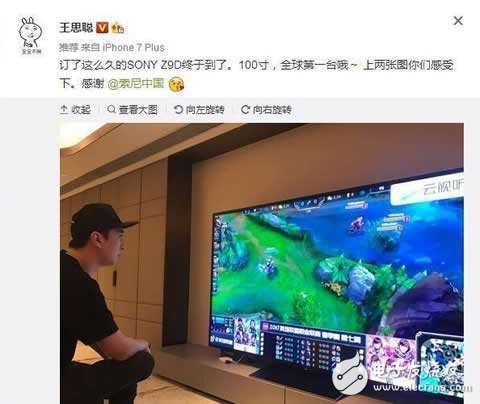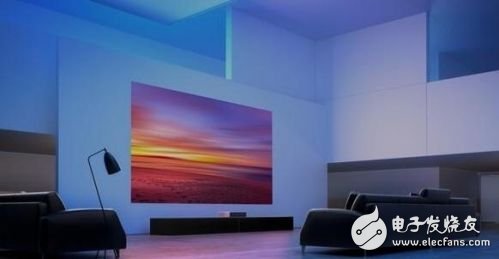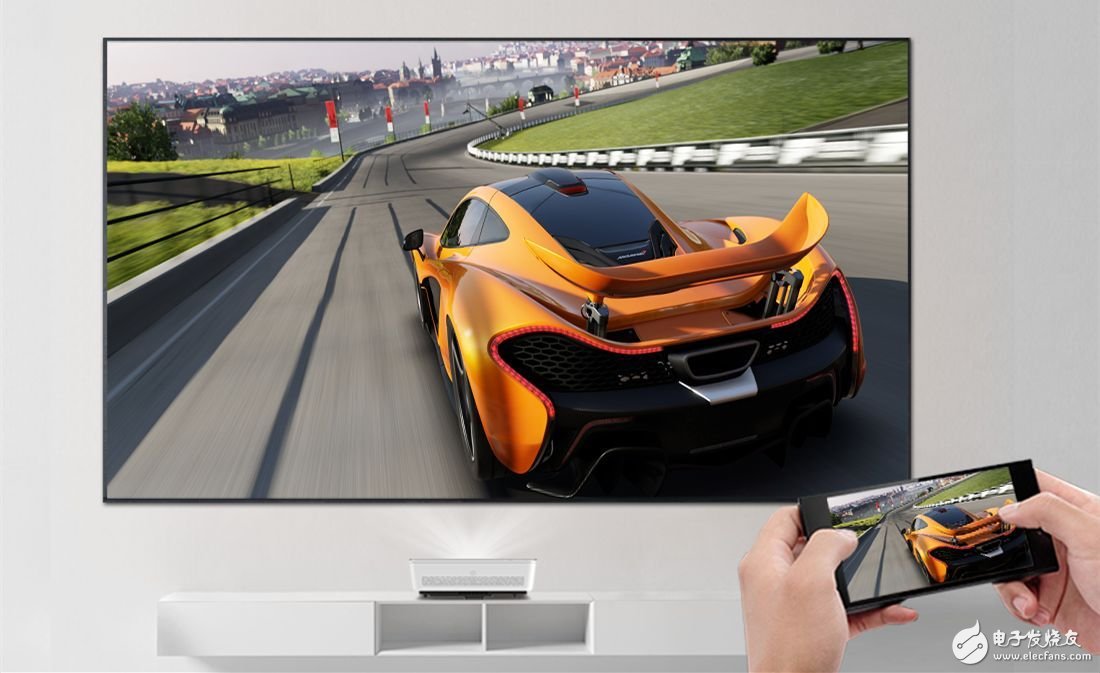It has been nearly 30 years since laser TVs emerged from the product form to today’s explosion. During this period, the form of flat-panel TVs has changed from the earliest CRT TVs, plasma TVs, and LCD TVs to today’s OLED and even QLED TVs. After so many generations, however, with the increasing requirements of mass consumption for TV size, flat-panel TVs are technically difficult to break through. Taking 100 inches as an example, flat-panel TVs usually require a price ranging from 20W to 50W. It is difficult to "fly into the homes of ordinary people." The laser TV re-enters people's field of vision with a higher cost performance.

As early as 1965, Texas Instruments (TI) in the United States successfully developed a monochrome laser display. In the Seventh Five-Year Plan, laser application technology has also become one of the first 863 science projects in my country. Early its laser TVs used gas lasers, which had very low beam energy utilization, and the water-cooling system was bulky. Until the semiconductor solid-state lasers were put into use, the laser display technology was leaps and bounds. The semiconductor solid-state laser light source has the characteristics of small size, high energy efficiency, and low heat, and can be widely used in various scenarios. Laser TV is now able to move from precision engineering tools to mass consumer products, thanks to this technological innovation. Those who are interested can check the light source parameters of various laser TVs. They all say: All solid-state laser light sources, this is what they are talking about.

It has been nearly a decade for laser TVs to develop from industrial products to the mass consumer market, and many domestic and foreign companies are playing the role of laser display technology promoters.
Sony Dafa is good, everyone knows Sony TV well, but Sony's layout on laser TVs started very early. In 2005, Sony invested in the construction of a huge laser theater with a giant screen of 500 square meters at the Aichi World Expo, which also caused a sensation in the scientific and technological circles at that time;
In 2006, my country developed the world's first large-screen laser TV. Both the national "Eleventh Five-Year Plan" and the provincial "Eleventh Five-Year Plan" made laser TV projects a key support project;
In the same year, Mitsubishi launched a prototype laser TV and entered the US market with a high profile, which received a good response;
In 2007, the Guangfeng Optoelectronics team in the Silicon Valley of the United States invented the revolutionary ALPD laser display technology, which solved the inherent deficiencies of monochromatic lasers in display;
In 2008, Mitsubishi officially launched the largest 73-inch laser TV in the US market;
In 2013, LG showed a 100-inch laser TV at CES;
In 2014, Hisense held a new product launch conference and launched a 100-inch laser TV product. This TV has a built-in VIDAA operating system, which can project a display screen of more than 100 inches in a space less than 0.5 meters away from the wall;
In 2016, KUPA, a brand of Shenzhen Jinyan Micro Technology Co., Ltd., exhibited a 120-inch laser cinema projector at the Hi-Tech Fair, with a projection ratio of 0.23. It can project 120 inches from a distance of 40 cm from the wall, which once again refreshed the laser TV. The largest size in the consumer market;
In 2017, Chengdu micro-investment manufacturer XGIMI Technology launched 3 laser TVs, of which T1 is a two-color 4K laser light source. This is the first time that a two-color laser has been used in the household goods category, but it is a local tyrant’s toy for RMB 79999;
In the same year, the "catfish" Xiaomi Mijia brand in the science and technology circle released the Mijia Laser TV, priced at 9999, and for the first time reduced the price of home laser TVs by 10,000 yuan.
So far, although Mijia’s laser TV has been called the "micro-projector of the laser circle" by many peers, its brightness has been criticized. The brightness of a light source is 5000 lumens and the measured brightness is only about 1400 lumens. But the author believes that the significance of its birth is far greater than the market acceptance itself. The laser TV breaking 10,000 yuan is a very strong signal. Looking back at the development history of LCD TVs, in 2005, the 32†Sharp LCD TV was worth less than 10,000 yuan for the first time. By 2010, global TV shipments exceeded 200 million units. Can laser TVs be replicated in the next decade?
From the above major events in the development process, we can see that the main battlefields for laser TV promotion are China, Japan, and South Korea, and the domestic market may be the most active. Because laser display, as the fourth-generation display technology, can bypass the long-term monopoly of liquid crystal screen technology in Japan and South Korea to form a breakthrough. Therefore, the national level is also very supportive of the development of the laser display industry.

How about the current development of the domestic laser TV industry? It can be said from three directions.
As a highly sophisticated product, the laser TV industry chain is also divided into upstream, midstream, and downstream, like other products, and upstream basic technology research and development, such as optical lenses and optical raw materials; the midstream is the solution provider, responsible for integrating resources into optical and mechanical modules. For circuit boards, cooling modules, etc., downstream are ODM channels and terminal brand vendors.
The first is the technical genre. There are not many companies that have professional product development capabilities. For example, Guangfeng Optoelectronics, which masters fluorescent technology, Jinyan Micro and Shimeile, which masters optomechanical resources, are characterized by their own strength and ability to make products. , But also customized products for many brands in the industry. For example, Xiaomi’s Mijia Laser TV is customized by Guangfeng Optoelectronics.
Secondly, TV manufacturers such as Hisense and Changhong, which master traditional channels, are deeply rooted in traditional channels and have the ability to directly promote mom-and-pop stores in small county towns on the first-tier hypermarkets.
There are also emerging Internet brands, such as XGIMI, Xiaomi, Baofeng, etc. They are good at Internet marketing and have a huge fan base. In terms of product pricing, they are also as close to the cost as Xiaomi, hoping to achieve small profits but high sales by running volume. .
The laser TV industry is still in the stage of cultivation. Many manufacturers have the "dual identity" of competition and cooperation, but no matter what, everyone wants to make this "cake" bigger. The diversified competitive landscape also makes this market more colorful. .
Servo Motor Cable Assembly
Servo motor cables have been developed for the quick connection of computer aided CNC machines as for example CNC mills or drilling machines. They combine current supply and data transmission perfectly. Motor connection cables, feedback cables as well as transmission cables belong to the servo motor cables. We provide a whole cable connectivity solution for CNC machine manufactories.
Further application fields of motor construction are more intelligent such as temperature control or industrial fields with intelligent servo drives. Our professional engineers will satisfy your unit custom needs with greatest patience.
Servo Motor Cable Assembly,Servo Harness,Servo Cable,Servo Motor Cable
Feyvan Electronics Technology Co., Ltd. , https://www.fv-cable-assembly.com